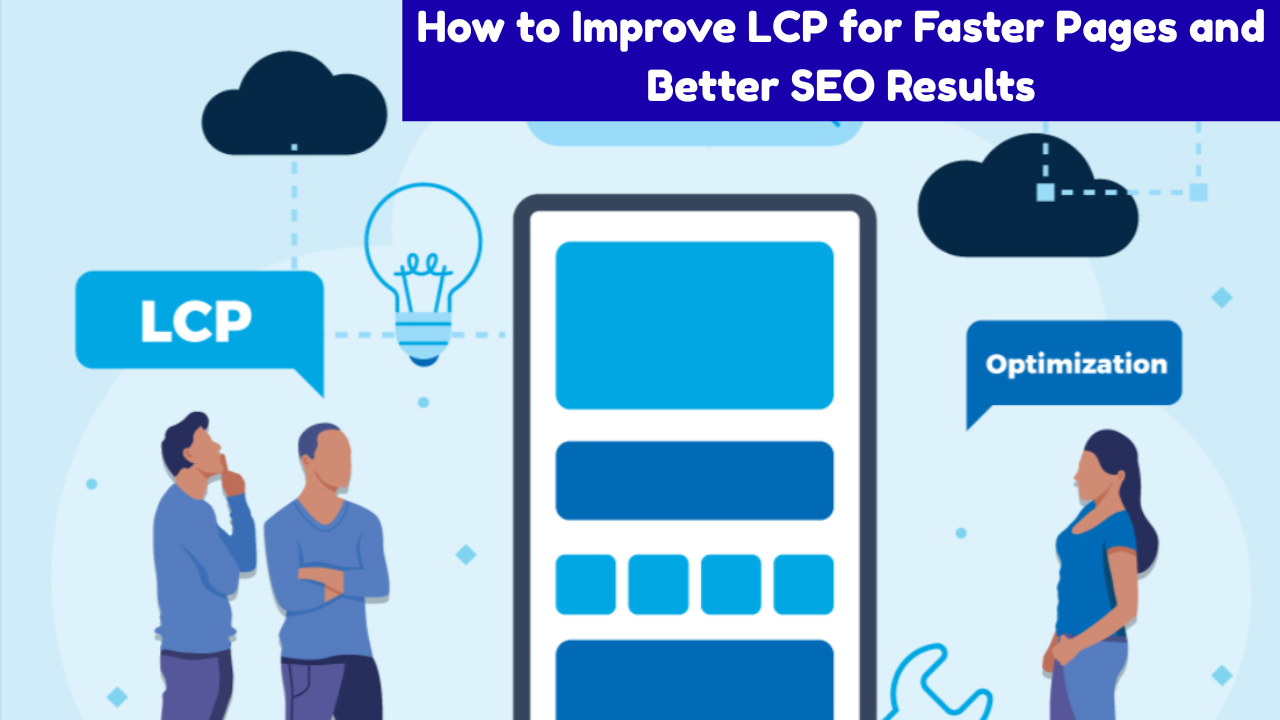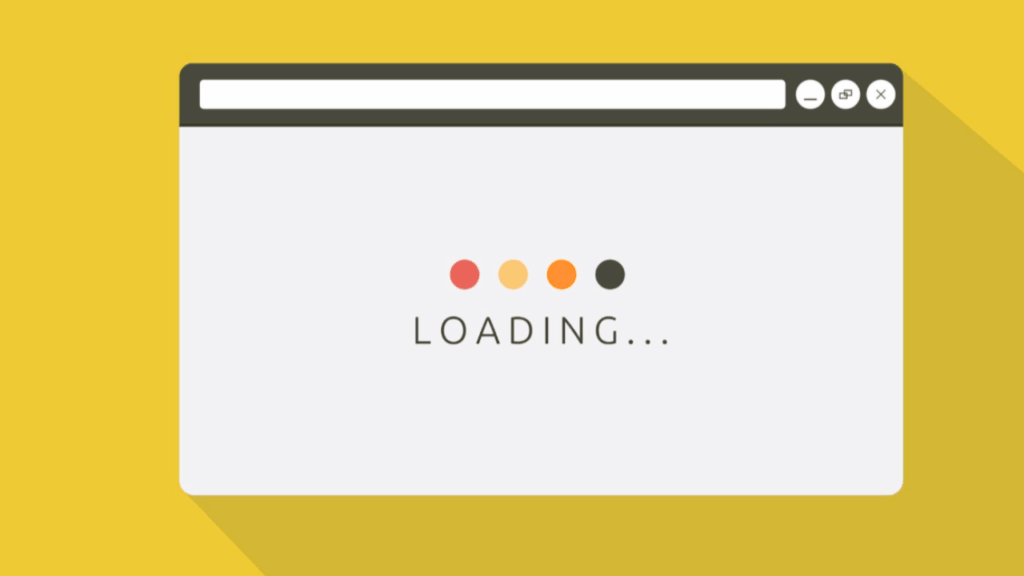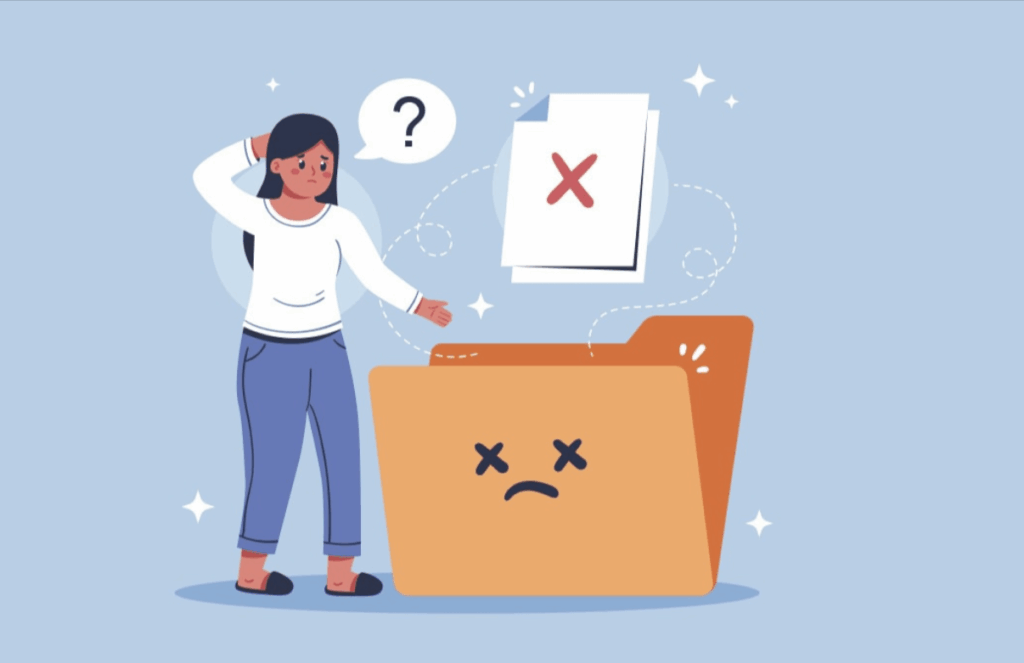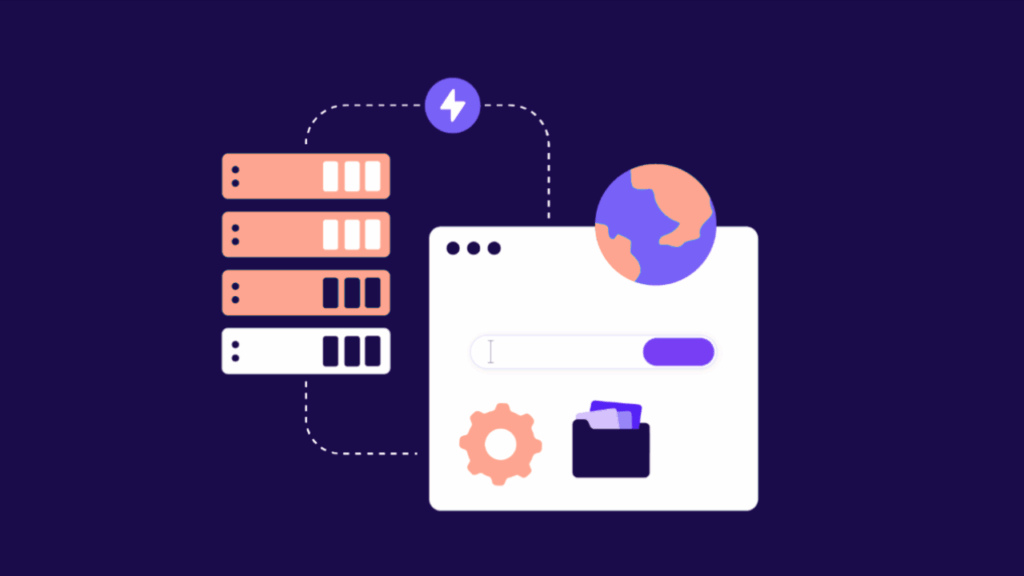
What Is LCP? How to Improve Largest Contentful Paint to Improve Page Speed & SEO
- accuindexcheck
- 0
- Posted on
A visitor to your website is not going to wait for every single file to load, rather, they tend to wait for that main, most important part of your page to come into view. That’s what Largest Contentful Paint measures-and it measures from the biggest visible element whether it’s a heading, image, video, or background graphic-actually rendering on the screen.
By definition, Google gives LCP the status of a Core Web Vital, which means it should directly impact the user experience and your SEO ranking. On a slow LCP, the visitor might leave your page without digesting any of your content; at times, Google may even demote your page in search ranking. This guide will give you an insight into what LCP really means, why it is crucial, and the established ways to make it as fast as possible.
What Is Largest Contentful Paint (LCP)?
Largest Contentful Paint (LCP) is a web performance metric that tracks how long it takes for the largest visible element on a page to fully load for the user. This could be a large image or graphic, a video thumbnail, a block of text, etc. A background image set via CSS would also qualify.
LCP measures how many seconds it takes for the main content to fully appear after the page starts loading. Google recommends keeping your LCP score at 2.5 seconds or faster. Scores between 2.5 and 4 seconds need improvement, while anything over 4 seconds is considered poor.
How LCP Impacts SEO
Fast LCP favors faster loading of your main content, increasing user engagement while reducing bounce rates, the very things that could help your SEO.
1. Direct Role in Google’s Ranking Algorithm
Largest Contentful Paint forms one of the Core Web Vitals from among which Google has officially asserted to treat websites for its ranking. A good LCP communicates to search engines that a present site’s main content is loaded quickly, which is one of the key indicators of user satisfaction. On the other hand, a bad LCP drags your pages down on the SERPs as Google is inclined to rank website[s] providing fast and smooth browsing experience above the others.
2. Influence on Click-Through Rates (CTR)
Before users finally get down to interacting with your content, LCP impacts indirectly just how often users click on your site from among the many results presented to them. A slow site, getting a lower ranking, would naturally get fewer clicks from there while improving LCP can help with raising its ranking and thus the organic CTR therein.
3. Impact on User Engagement
Large content rendered fast is helpful to users as it begins the reading or interacting process without delay, which increases time-on-page, scroll depth, and the potential to view another section of your site. A slow LCP disrupts the user experience, often causing visitors to leave the page before even seeing the headline.
4. Effect on Bounce Rates
If you have an LCP score that Lepor is unfavorable to the page, it brings about a high bounce rate, with visitors quitting before anything becomes visible or usable. This is a sign for search engines that the page might somehow be diverting from the users’ expectations, so it might further worsen the rankings.
5. Relevance in Mobile-First Indexing
With mobile-first indexing, Google primarily uses the mobile version of your site to decide rankings. Since mobile networks and devices can differ so much in their speed, this means that on a bad LCP optimisation on mobile, your site can lose search advantage, even if your desktop is very fast indeed.
Common Causes of Poor LCP Scores
1. Large, Unoptimized Images
Images are usually the elements that appear as the Largest Contentful Paint. They take longer to load if they are not compressed, rightly sized, or served in next-gen formats like WebP or AVIF, which causes a delay in LCP. Large, unoptimized images make the browser load heavy files first, delaying page rendering and slowing overall load speed.
2. Slow Server Response Time
Server response time to a request when the greatest visible element becomes late in starting the loading of all page resources-potential for being a source of late load-should be attributed to either bad hosting performance or lack of caching, or an overloaded server. A remedy for this would be using a Content Delivery Network, enabling cachin
3. Render-Blocking JavaScript and CSS
JavaScript and CSS that must be loaded before the page starts rendering can block the browser from showing visible content immediately. Render-blocking resources delay the rendering of the biggest element in the visible area of the viewport. So, these resources should be minified, deferred, or asynchronously loaded for the browser to begin showing content as quickly as possible.
4. Web Fonts Causing Delays
If custom web fonts are not loaded efficiently, they could delay text rendering. This is especially problematic when a very large heading or paragraph is the LCP element. Until the font is downloaded, the browser may hide the text (FOIT — Flash of Invisible Text) or display it with a fallback font, from which the real rendering of the final content gets delayed. Preload causing font and apply font-display: swap will reducing the issue.
5. Client-Side Rendering Issues
Large CSR-heavy sites allowing initial rendering of HTML fast tend to give more time in fetching and rendering the main content through JavaScript. This means the largest element may not surface until all scripts have run away with it, delaying the LCP. Implementing SSR or SSG helps your content load and appear faster on the page.
How Web Browsers Load Images on a Page

1. Browser Requests the Image File
After loading the webpage into the browser, HTML parsing begins; upon encountering respective tags or background-image CSS properties during parsing, the browser issues image requests to the Web server or CDN for each image a page requires.
2. Server Sends the Image Data
The server responds with image data, sending it to the browser. The speed of this process depends on server performance and network speed and file size. Larger images require a longer download time due to a lack of optimization.
3. Browser Decodes the Image
Once the image file gets downloaded, the browser, whether to display or to fetch more drawing commands, will decode it into pixels. It is noteworthy that differing image formats-JPEG, PNG, WebP, etc.-will undergo distinct decoding methods, along with being dependent on browser implementation.
4. Image is Rendered in the Layout
After decoding, the layout places the image at its proper location on the page. If the HTML or CSS does not specify the image dimensions, layout shifts occur when the image finally appears, which creates big problems for metrics such as Cumulative Layout Shift (CLS).
5. Lazy Loading and Progressive Rendering
Websites in the modern day employ lazy loading: Images that are outside the area viewable during the loading phase get loaded only when a user scrolls over to them. Progressive JPEGs load in layers; first, they present a blurry view, and then the image sharpens as it loads to completion.
How Image Loading Impacts Largest Contentful Paint (LCP)
Images tend to be the biggest visible elements on any website, so their loading period will affect your LCP score. Slow appearance of images drags the time when the user witnesses the entrance of main content and impacts user experience and SEO rankings. The image loading parameters contributing to LCP are as follows:
1. Large and Unoptimized Files
A high-res image that’s poorly compressed will take a few seconds to download, depending on how fast the internet connection is. This will, in turn, delay when the largest element gets rendered, thus increasing your LCP time. You should use the modern format like WebP or AVIF and compress images trying not to compromise their quality to improve the speed of loading.
2. Render-Blocking Resources

If your images are queued behind heavy JavaScript or CSS files, they do not load until those resources finish processing. This sequencing can add an extra critical delay to LCP. Adjusting the order of resources to prioritize image loading and using the preload method should ensure their faster arrival.
3. Missing Width and Height Attributes
If no image dimensions are determined, browsers will only be able to position the image after it has finished loading, causing a layout shift and delay in LCP measurement. Having width and height attributes or CSS aspect ratios should allow a much quicker rendering with very little layout shift.
4. Lazy Loading Issues
While lazy loading improves performance for images further down the page, if applied to the main content image, it becomes detrimental to LCP. The browser delaying the load of the largest image just because it isn’t visible in the viewport would naturally delay LCP. Instead, all critical above-the-fold images should be loaded straight away.
How to Improve Largest Contentful Paint (LCP)
Below are six proven strategies to achieve the fastest possible LCP times :
1. Optimize and Compress Images
The longer load times present by the heavier and unoptimized images usually become a hindrance to rendering your most valuable content on the page, especially on slow networks or mobile devices. To optimize is to reduce the file size while keeping the visual quality intact, and any other had to come such that webpages load faster and thus provide the user with a better experience.
- Use Modern Formats (WebP, AVIF): Modern formats provided better-image compression relative to old formats, hence they could reduce file sizes by up to 50%. With such, the browsers load images faster, thereby increasing the speed of largest content painting.
- Use Responsive Images: The srcset and sizes HTML attributes are used to prevent images larger than necessary from being downloaded by mobile users; instead, those attributes ensure the download of various smaller versions fit for smaller devices.
- Compress Images: Compress without any loss of quality using any tools or plugins, so as to lower bandwidth usage and improve load speed.
2. Improve Server Response Time

Server response speed is vital for LCP because it determines how soon content starts rendering in the user’s browser. Slow responses from the server cause slow page loads.
- Use a Content Delivery Network (CDN): These are networks of servers scattered globally so that users can download the assets from the nearest location, reducing latency and increasing response time.
- Choose Reliable Hosting: Buy a hosting provider with an excellent hosting plan, where servers have good turnaround time actuated processing power. In synergies with inadequacies in bandwidth, one should look for upgrades to VPS or dedicated hosting to shore up speed.
- Optimize your Backend Processing: Heavy server-side processes should get minimized, storing things in cache, and optimizing database queries all point at reducing server-side processing time.
3. Minimize Render-Blocking Resources
In terms of JavaScript and CSS, they will hold up the browser as it attempts to load that largest contentful element, thus directly putting that havoc on the LCP score.
- Defer or Async Load Non-Critical JavaScript : Non-essential scripts should be deferred or asynchronously loaded so as to not interrupt after loading of main content.
- Inline Critical CSS : Extracting CSS for above-the-fold content and inlining it into HTML allows browser rendering to begin immediately rather than being stalled on downloading the external CSS file.
- Minify and Consolidate : File visibility should be cut down by concatenating, minifying, and compressing them for lesser loading, render blocking scenarios.
4. Preload Important Assets
Preloading allows the browser to quickly fetch important resources to set up the big visible content thus speeding up rendering processes.
- Preload Fonts: Custom fonts might delay text rendering if not prioritized for loading. The act of preloading a key font allows text rendering with no lag or invisible fallback fonts.
- Preload the Hero Images: The main image or banner mostly is the largest content on a page, and preloading it means signaling browsers to fetch it with top priority.
- PreLoad the Important CSS and JS: Preload stylesheets and scripts that are required for displaying above-the-fold content faster.
5. Implement Lazy Loading
Lazy loading defers the loading of off-screen content until it’s strictly needed and hence, this can boost initial load performance and LCP when implemented correctly.
- Apply to Below-the-Fold Content Only : Ensure only images and elements below the viewport are lazy loaded. Prevent the main content or hero images from being lazily loaded to avoid delaying the rendering of the largest contentful paint.
- Use Native Lazy Loading : Use native lazy loading via loading=”lazy” since modern browser support make it more efficient and easier to maintain.
- Avoid Lazy Loading Critical Resources : Lazily loading elements above the fold may diminish reinforcement of your LCP score.
6. Use Efficient Caching
Caching stores previously downloaded assets on the user machine/server, thus making it easy for your site to load faster on repeat visits, thereby greatly boosting LCP on repeat visits.
- Browser Caching : Permits specifying proper cache headers so that browsers cache static resources like images, CSS, JavaScript, etc., and do not require the files to be re-downloaded on repeated visits.
- Back-end Caching : Caching machinery of some kind, whether it be Varnish, Redis, or some other plugin for the CMS, so that it can really serve pre-rendered content super fast for every request and is not re-processed every time it receives a request.
- Leverage Cache-Control Policies : Set up suitable expiration times and validation mechanisms so as to keep cached content fresh while avoiding futile reloads.
Monitoring LCP
Keeping your LCP in check is the most suitable to make your website feel fast and rank well in organic search results. Measuring it regularly can help spot the particular performance problems early on and fixing them before it actually enters into user experience or visibility.
Recommended Tools
- Google PageSpeed Insights: Gives a pretty clear LCP score along with handy tips to improve it.
- Google Search Console Core Web Vitals Report: Tracks LCP performance if there is across your entire site, and highlights pages that merit attention.
- Lighthouse: Within Chrome DevTools, it executes detailed audits that include LCP metrics.
- WebPageTest: Provides an opportunity for in-depth testing of how your pages load including provisioning for visualizing LCP timings.
- Accu Index Check: Checks index status of pages whilst also keeping an eye on must-know performance metrics such as LCP.
FAQs
What is meant by largest contentful paint?
Largest Contentful Paint (LCP) keeps track of the time it takes for the largest visible content element on a webpage to finish loading on the screen. This element might be a huge image, video, or a chunk of text. LCP is vital because it accounts for when users actually consider the page usable.
How does LCP affect SEO?
LCP affects search engine optimization because it forms part of the Core Web Vitals by Google that assess user experience. Naturally, pages with fast LCP rank higher since they provide quicker access to relevant content. Slow LCP leads to higher bounce rates and bad rankings.
How to fix the largest contentful paint element for a background image?
Optimizing the background image to reduce LCP issues goes by reducing the file size without reducing quality. Use modern formats like WebP or AVIF. Preloading of the background image can happen in the HTML so that it begins loading early. Besides, it is worth considering lazy loading CSS-wise for images that will not immediately be seen.
What is the image size limit for Contentful?
Contentful suggests keeping the image size under 10 MB per file for decent load performance. Larger images usually slow down page load and raise LCP time, so compressing images along with using responsive image techniques would give a faster delivery of optimized contents.
In Conclusion
LCP is Very importanf for SEO and user experinece. Fast LCP means that the main content of the page loads fast and keeps visitors engaged, which in turn, helps in ranking the page higher in search results. Monitoring and optimizing LCP keeps bounce rates low and ensures the site meets Google’s Core Web Vitals.
Optimize images, improve server responses, reduce render-blocking resources, ensure lazy-load resources, and caching to keep load times fast. Measuring LCP for your website regularly with reliable tools can aid in the early detection of issues, ensuring a smooth running website. Making LCP optimization a priority will assist in delivering high-value and competitive websites in today’s digital realm.